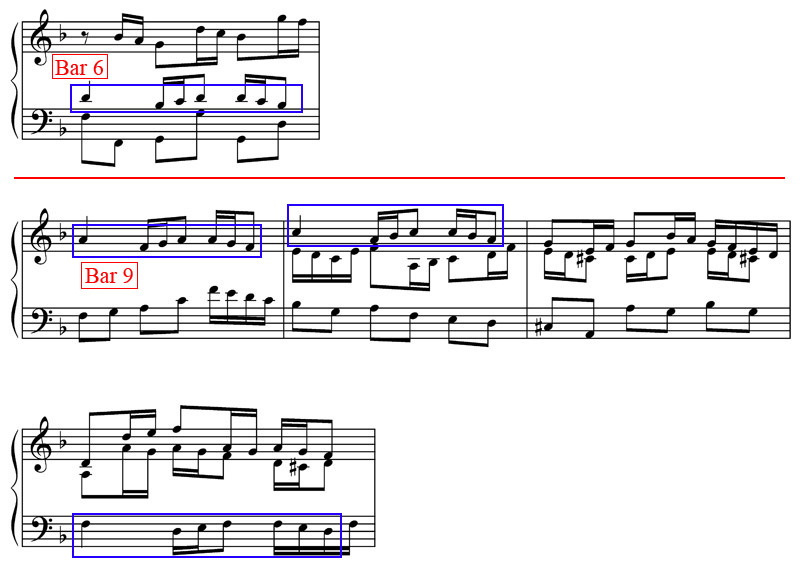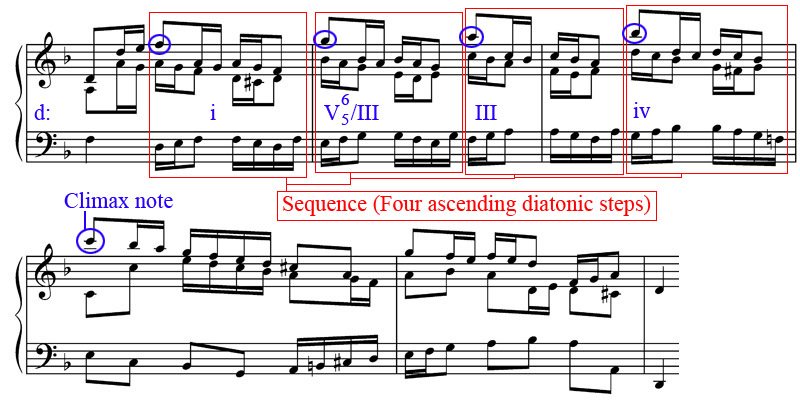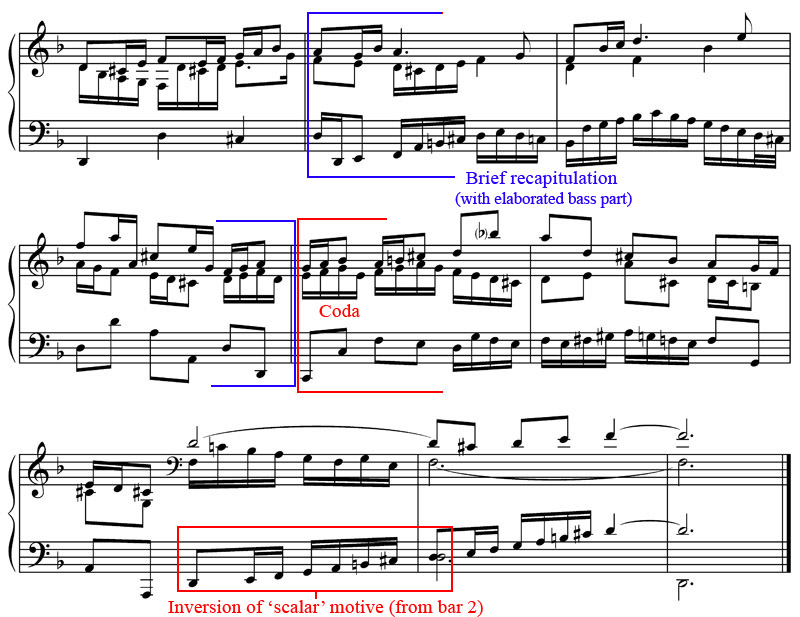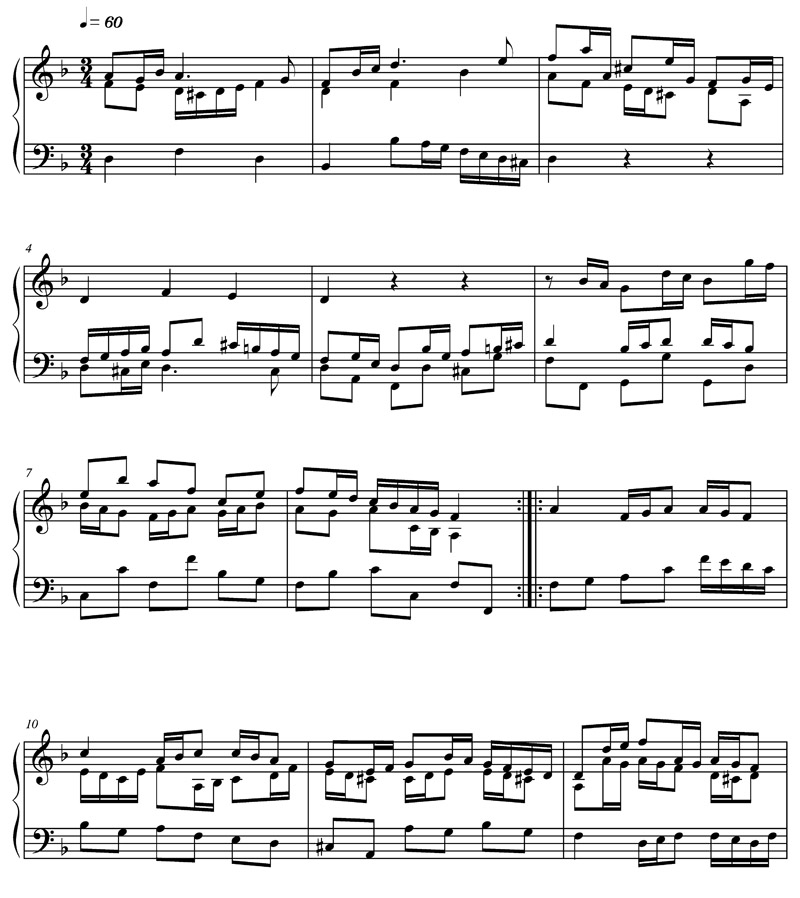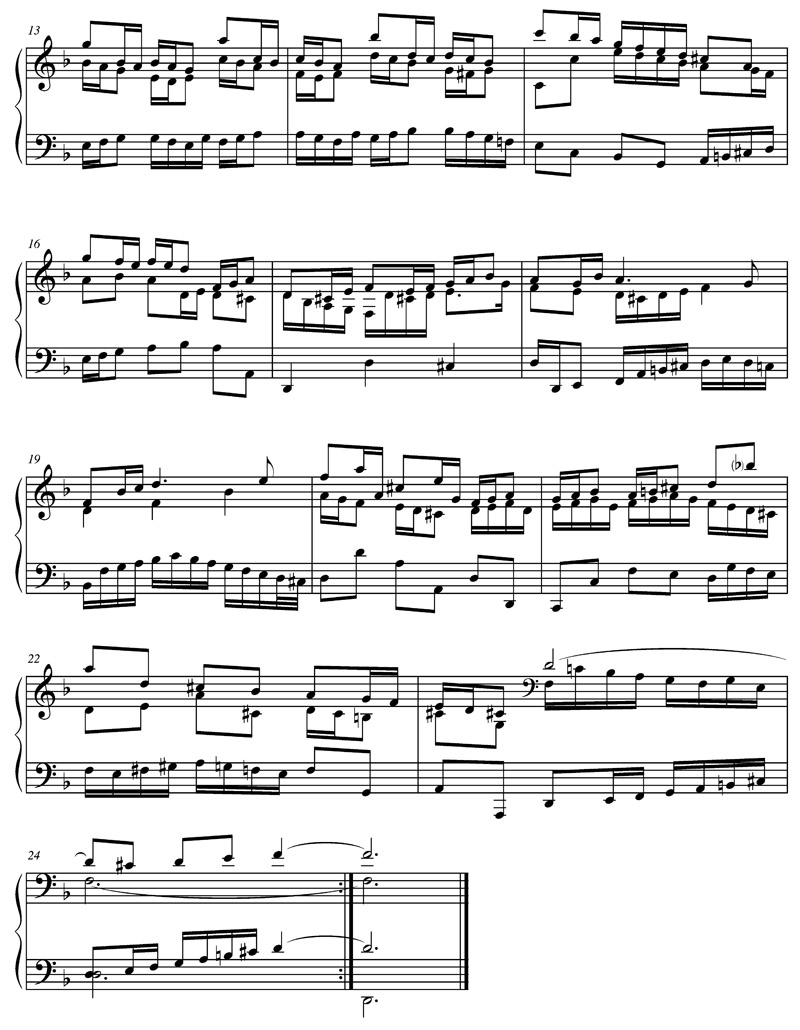C. Step by Step Composition
(continued)8. Imitation. As a further aid to the development of our piece we can draw on secondary material from previous passages and bring them to the fore. To open the B section (bars 9-12) we have taken an earlier accompanimental figure from an inner voice (from bar 6) and make it into a figure that will become a point of imitation. Similar to the entrances of a fugue, this little melodic idea is passed around from voice to voice and transposed to scale degrees that best support the harmonic progression.
9. Sequence. Previously we discussed the need for points in a composition where the composer can to provide the listener with brief periods of time to 'relax' the ear from continually needing to absorb, digest, and assimilate complex manipulations of the musical materials, while still providing ample momentum to the overall flow of the piece into the next passage. One musical construct that can afford the composer with a simple way of achieving this is the use of a sequence.
Here we have articulated a four step, diatonic sequence that ascends to the climax note of the entire composition, a high C (recall that in the A section, Bb previously marked the climax, and for the sake of drama, we have exceeded this in the B section). As well, this occurs at the golden section of the work. The golden section refers to the ratio of (approximately) 1.6 that has long been regarded as one possessing certain natural aesthetic properties. In our piece of a total of 24 bars (not including the single concluding bar after the repeat of B), the climax occurs at bar 15, or a proportion of 1.6. Therefore, this moment should innately feel to be at the 'right' point in the piece by the listener.
The connection of this moment with another motive in the piece is notable. Recall the descending scalar passage from bar 2 in the bass - here it is used as the culminating element of the second section. As well, the rhythmic congruence between the soprano and alto voices in beat two of bar 15 adds to the excitement of the moment.
Bars 12-16.
10. Concluding Passages. A brief recapitulation of the opening three bars occurs after our return to the original key of d minor. The bass part is made more elaborate here to provide additional rhythmic activity and forward motion as the piece nears its conclusion. This seamlessly connects to a brief coda (or closing section) that consists of new material based on the motives of the piece. One last technique is introduced here to connect the coda with an earlier idea: melodic inversion. Melodic inversion occurs when the contour of a line is flipped. The scalar motive from the bass part in bar 2 is inverted and articulated in the bass and tenor voices in this final passage.
Complete Composition.
Return to the Index.
